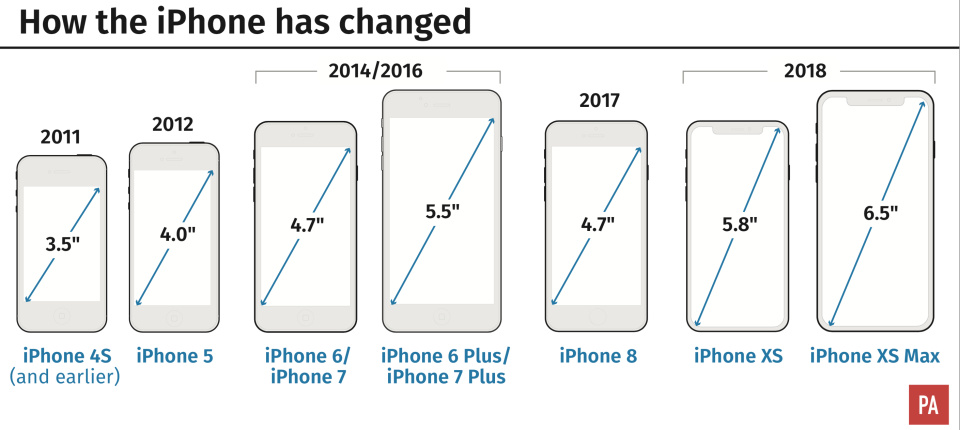Apple’s huge new £1,249 phone ‘actually costs less than £350 to make’

Apple made history with its iPhone Max launch – which the newly launched phone the most expensive handset of some time, and by some margin.
But an analyst company took apart the £1,249 model, and found that, behind the scenes, there’s actually been a bit of cost-cutting.
TechInsights, based in Ottawa, Ontario dismantled an iPhone Max with 256 gigabytes of storage (worth £1249 in store) and priced it all up.
In its cost analysis released on Tuesday, TechInsights found that the single priciest part in the iPhone Xs Max – the display – cost $80.50 (£61), compared with $77.27 (£58.20) for last year’s iPhone X, which featured a smaller 5.8-inch screen.

The relatively small increase in cost despite the larger screen size was because Apple appeared to have removed some components related to its so-called 3D Touch system, the experts said.
READ MORE ON YAHOO NEWS UK
Labour MP’s calls for a general strike branded a ‘disaster’
‘It’s not in the national interest’: Theresa May rejects calls for general election before Brexit
Third case of monkeypox in England is healthcare worker who cared for patient with infection
Scotland Yard asks for MORE cash to continue hunt for Madeleine McCann
‘All told, what they took out adds up to about $10, so this $80 estimate would have been about $90,’ Al Cowsky, who oversees cost analysis at TechInsights, told Reuters in an interview.
‘They had a trade-off in cost.’
Apple declined to comment on the study.

But Bob O’Donnell of TECHnalysis Research said Apple likely made the right decision to focus on ensuring it could deliver a larger-screened model this year economically.
‘For a certain group of people, the whole thing is about the screen. It’s driving the whole experience and it’s what is making people excited about using the phone,” O’Donnell said.
Other costs that increased were the phone’s processor and modem chips, primarily because the chips used newer chip-making techniques from Intel Corp and Taiwan Semiconductor Manufacturing Co Ltd to boost their performance while taking up the same space.

 Yahoo News
Yahoo News 

